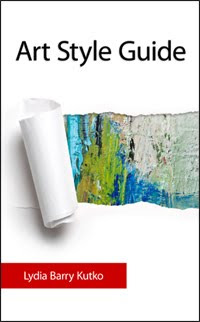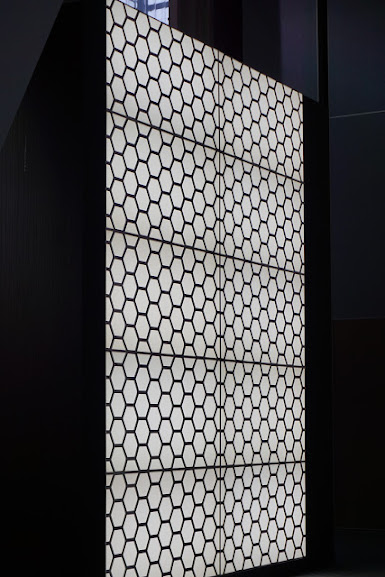lydia barry kutko and Art Style Guide
Nest by Tamara
talks with art expert Lydia Barry Kutko
author of newly released,
Art Style Guide
 About Lydia -
About Lydia -
Lydia Kutko has a BA in Art History from the University of Wisconsin-Madison and an MA in art & business from the Fashion Institute of Technology. She is the Arts Contributor at LVCMag, an online women’s lifestyle publication, as well as the author of her own monthly column, the Art Style Guide. Kutko’s work has also appeared on Etsy.
 Lydia recognized the perils of art collecting. Seeking to answer the question “what artwork is right for me?,” Kutko, a regular on the New York art gallery scene decided to answer just that question. The Art Style Guide, a 6-step process, is Kutko’s response to the mysteries and apprehensions of beginning an art collection. Her approach focuses on defining one’s art style, or personal taste, as the gateway to the pleasures of collecting.
What is Art Style Guide? Newsly released this September 2010, Art Style Guide acts as an alternative to other more traditional guides on collecting art. The main thrust is to assist the art enthusiast to define their unique aesthetic appreciation. The Guide encourages the new collector to ease into collecting using mass media culture as a way to learn what they like, as well as to educate on art proportions. This formula helps the new collector to formulate opinions and to better understand their personal artistic style. Would-be collectors become aware of their taste and find art in art publications. After all, Lydia reminds, well done fashion, shelter and design spreads in popular magazines are often echoes of Manets, Vermeers, Rubens, and so on. Most of these stylist and photographers have been to art school. After the art collector notes which qualities appeal to them (color, lines, shape, etc.,) Lydia encourages to open art publications and compare findings. Art Style Guide can be purchased on Lydia's site: http://www.lydiabarrykutko.com/ or http://www.lulu.com/product/paperback/art-style-guide/13033236
Lydia recognized the perils of art collecting. Seeking to answer the question “what artwork is right for me?,” Kutko, a regular on the New York art gallery scene decided to answer just that question. The Art Style Guide, a 6-step process, is Kutko’s response to the mysteries and apprehensions of beginning an art collection. Her approach focuses on defining one’s art style, or personal taste, as the gateway to the pleasures of collecting.
What is Art Style Guide? Newsly released this September 2010, Art Style Guide acts as an alternative to other more traditional guides on collecting art. The main thrust is to assist the art enthusiast to define their unique aesthetic appreciation. The Guide encourages the new collector to ease into collecting using mass media culture as a way to learn what they like, as well as to educate on art proportions. This formula helps the new collector to formulate opinions and to better understand their personal artistic style. Would-be collectors become aware of their taste and find art in art publications. After all, Lydia reminds, well done fashion, shelter and design spreads in popular magazines are often echoes of Manets, Vermeers, Rubens, and so on. Most of these stylist and photographers have been to art school. After the art collector notes which qualities appeal to them (color, lines, shape, etc.,) Lydia encourages to open art publications and compare findings. Art Style Guide can be purchased on Lydia's site: http://www.lydiabarrykutko.com/ or http://www.lulu.com/product/paperback/art-style-guide/13033236
Lydia shares two important points
about incorporating art in home
with Nest by Tamara
Hanging Original Works of Art in a home:
Unless your art is a 2 ton piece of steel, it is not fixed to the first place you choose to hang or display. When decorating and living with art, it is important to avoid making it an object of worship. Lydia encourages art collectors to treat art more simply, and not hang it in a way which conveys its superiority to the collector. Lydia likes to hang works within the framework of a home, not on a white wall squired away from the rest of the living environment. Inevitabley, art is to be enjoyed and should not be treated as too great to mingle in our home. However, if the piece shines majestically away from my sofa, the colors becoming richer; the forms more weighty and meaningful, then Lydia suggests removing it from the "noise" of other furnishings. Of course, as in all aspects of our lives, our needs may change over time, and therefore to achieve the maximum enjoyment from art, move it around from time to time. By moving a piece that has been in the same spot for quite some time, the art takes on a different shape and meaning within the new context.
Whether to match art to your interiors or not?
Lydia advises not to match artwork to furnishings in a literal way. A well decorated home happens organically, over time, and this doesn't occur by matching colors. Just like decorating a home, adding a piece of art to a room should happen organically as well. Through patience and undertanding what that particular piece means to you, the art makes sense in a room, not by color coordinating. Sometimes visual disagreement is a way to bring a piece into a room, for instance, if an art piece is about the rainforest, then it may be fun to go the opposite of lush when furnishing. Or, your interiors are textured, rich red and aubergine -- go for a cool palette or sleek form in your artwork. All in all, Lydia encourages to be cautious not to overthink your decisions, however, and feel them instead. Listen to how the art speaks to you and use its voice in the environement.





